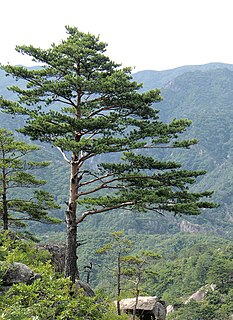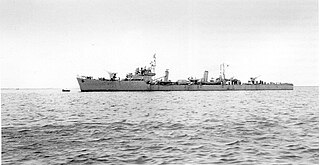Several ships have been named Matsu(松 / まつ, "pine tree"):

A pine is any conifer in the genus Pinus of the family Pinaceae. Pinus is the sole genus in the subfamily Pinoideae. The Plant List compiled by the Royal Botanic Gardens, Kew and Missouri Botanical Garden accepts 126 species names of pines as current, together with 35 unresolved species and many more synonyms.
- Japanese destroyer Matsu (1915), a Kaba-classdestroyer of the Imperial Japanese Navy during World War I
- Japanese destroyer Matsu (1944), the lead ship of her class during World War II
- Matsu-classdestroyer, a class of destroyer built for the Imperial Japanese Navy

The Matsu-class destroyers were a class of destroyer built for the Imperial Japanese Navy (IJN) in the late stages of World War II. The class was also designated the Type-D Destroyer. Although sometimes termed Destroyer escorts, they were larger and more capable than contemporary United States Navy destroyer escorts or the Imperial Japanese Navy kaibokan vessels.
- Japanese submarine I-29, a submarine of the Imperial Japanese Navy, code-named Matsu
- JDS Matsu (PF-286), a Kusu-class patrol frigate of the Japan Maritime Self-Defense Force, formerly USS Charlottesville (PF-25)

The Kaba-class destroyers were a class of ten destroyers of the Imperial Japanese Navy. Each was named after a variety of tree.

The Imperial Japanese Navy was the navy of the Empire of Japan from 1868 until 1945, when it was dissolved following Japan's surrender in World War II. The Japan Maritime Self-Defense Force (JMSDF) was formed after the dissolution of the IJN.
Matsu was the lead ship of the Matsu-class destroyer of the Imperial Japanese Navy. She had a very short career: her sinking as she returned from her first escort mission occurred less than a year from laying her keel in 1943, and just over three months from her completion in 1944.


